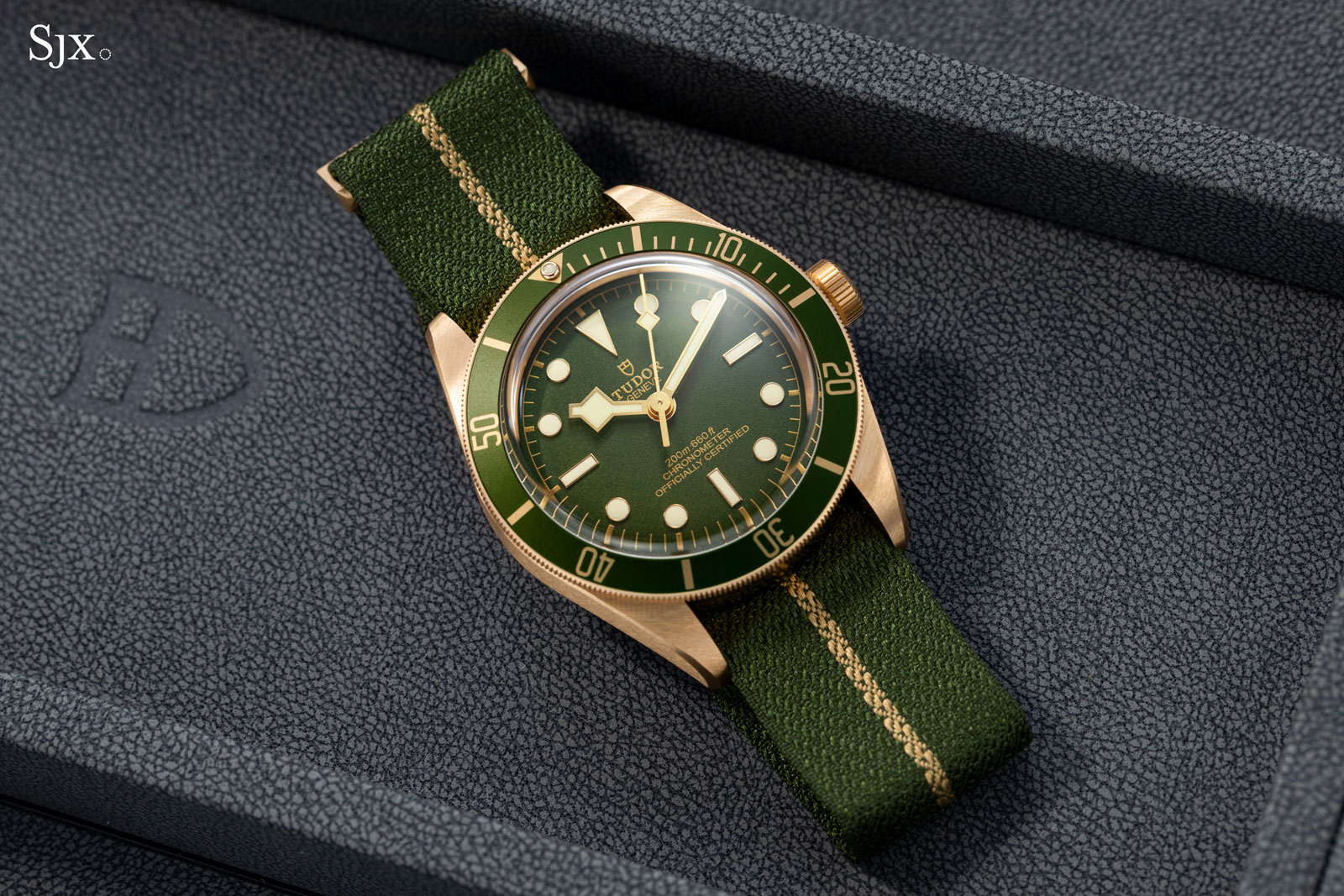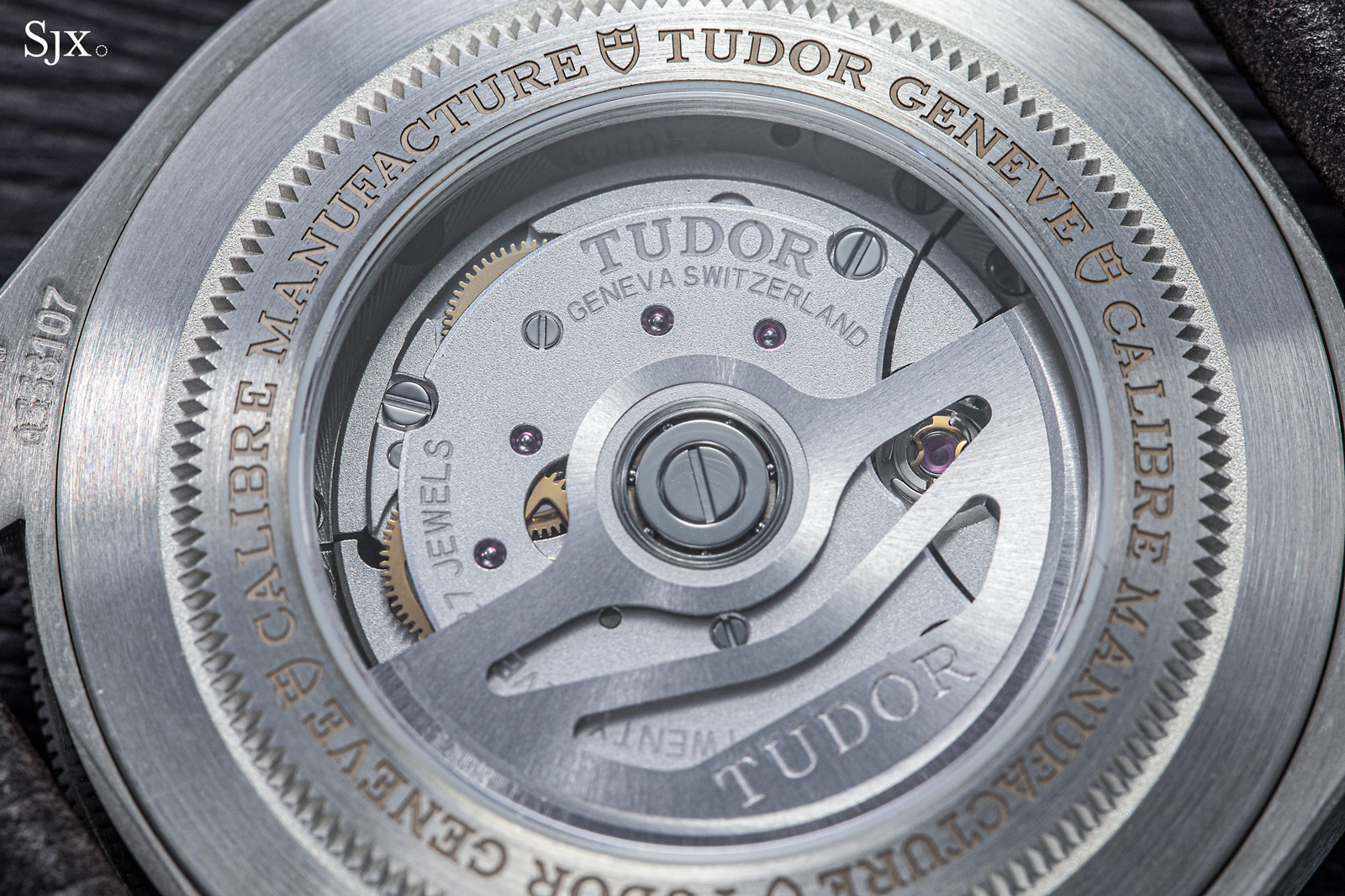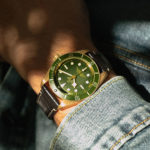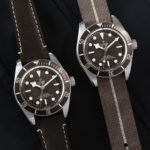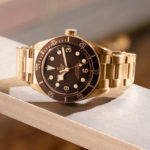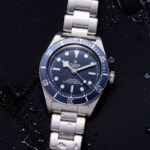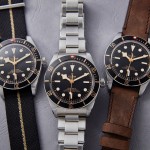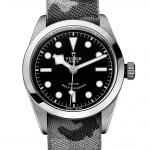Up Close: Tudor Black Bay Fifty-Eight 18K
Golden value.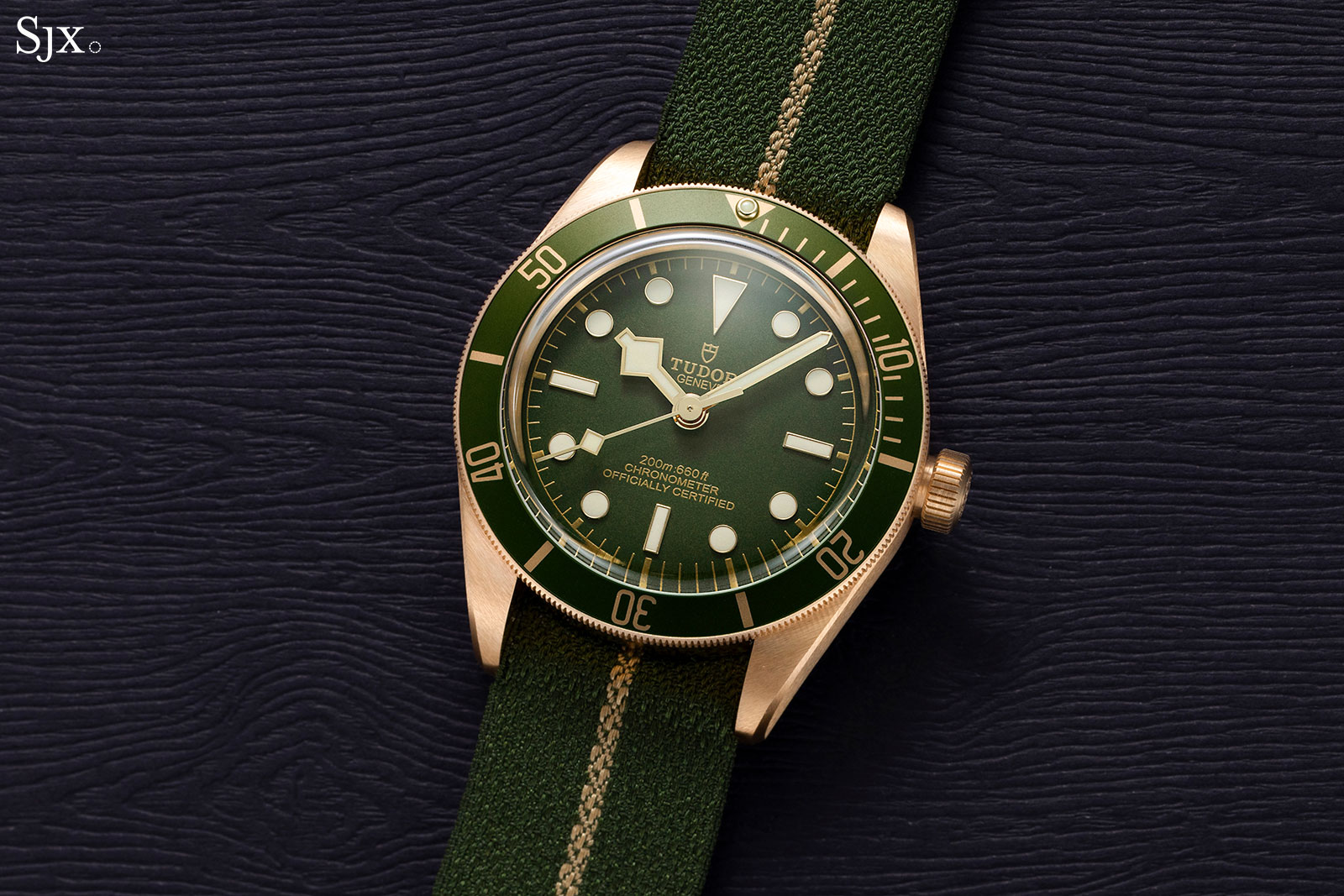
Unveiled just last week alongside its sterling-silver sibling, the Black Bay Fifty-Eight 18K is Tudor’s first solid-gold dive watch. A significant milestone for Tudor that perhaps reveals aspirations further up the price spectrum, the Fifty-Eight 18K lives up to its ambitions.
Initial thoughts
In late 2019 I was speaking with a senior Tudor executive and got an inkling that a solid-gold watch might be in the works. Being a fan of the brand (and fortunate enough to own a few of them), that was something I was very much looking forward to.
Now Tudor has finally done it, and I am impressed with the result. The Black Bay Fifty-Eight 18K is attractive, feels good in the hand, and is also well priced. The only disappointment is the lack of a matching gold bracelet. I know that would hike the price by at least 50%, but even then it would be a good buy – and it would be truly cool. Fingers crossed a bracelet is in the works.
But even sans bracelet the new Fifty-Eight feels good in the hand. It’s sized (almost) exactly the same as the steel Fifty-Eight, making it the perfect size for an easy-to-wear dive watch.
Naturally, the gold version is slightly heavier than the steel equivalent, but the weight is just enough to seem substantive, but not so much it’s unwieldy on the soft fabric strap (more on the weight reduction below).
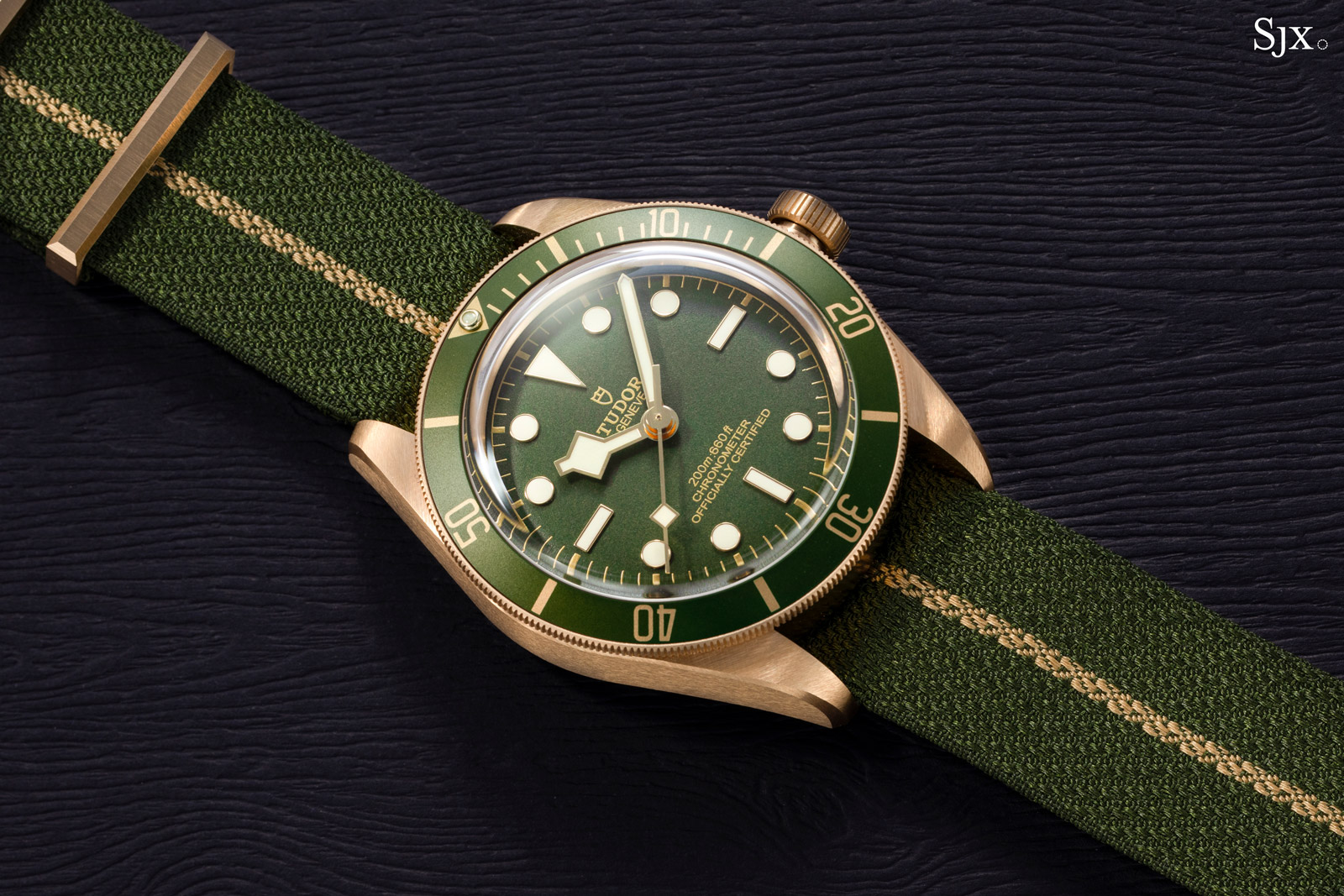
The weight gives the Fifty-Eight 18k an appropriately expensive feel. But as is always the norm with Tudor watches, the quality of the watch lives up to the price, and then some.
Almost every aspect of the watch has the sharp details expected of Tudor. Both the dial and case have excellent fit and finish. The only aspect that doesn’t quite fit in is the view from the back. The movement looks a bit plain – I would have preferred a solid back – but the MT5400 within is a technically accomplished calibre and one of the best in its price range.
Notably, the quality execution extends to the straps. The Fifty-Eight 18k is delivered with a pair of them, one leather and the other fabric, each with its own 18k yellow gold buckle and hardware. That’s both convenient – no need to swap buckles when swapping straps – and to preserve the design, since Tudor’s fabric straps usually have a wider buckle and metal keepers. Given that watch brands typically charge at least US$1,000 for a solid-gold pin buckle, the inclusion of buckles for each strap is admirable.
In fact, the quality of the watch is good enough to make the watch comparable to far more expensive watches. The Omega Seamaster 300 in 18k yellow gold, for instance, costs 25% more. The Fifty-Eight 18K is pricier than the average Tudor by a large margin, but it is a genuine value buy.
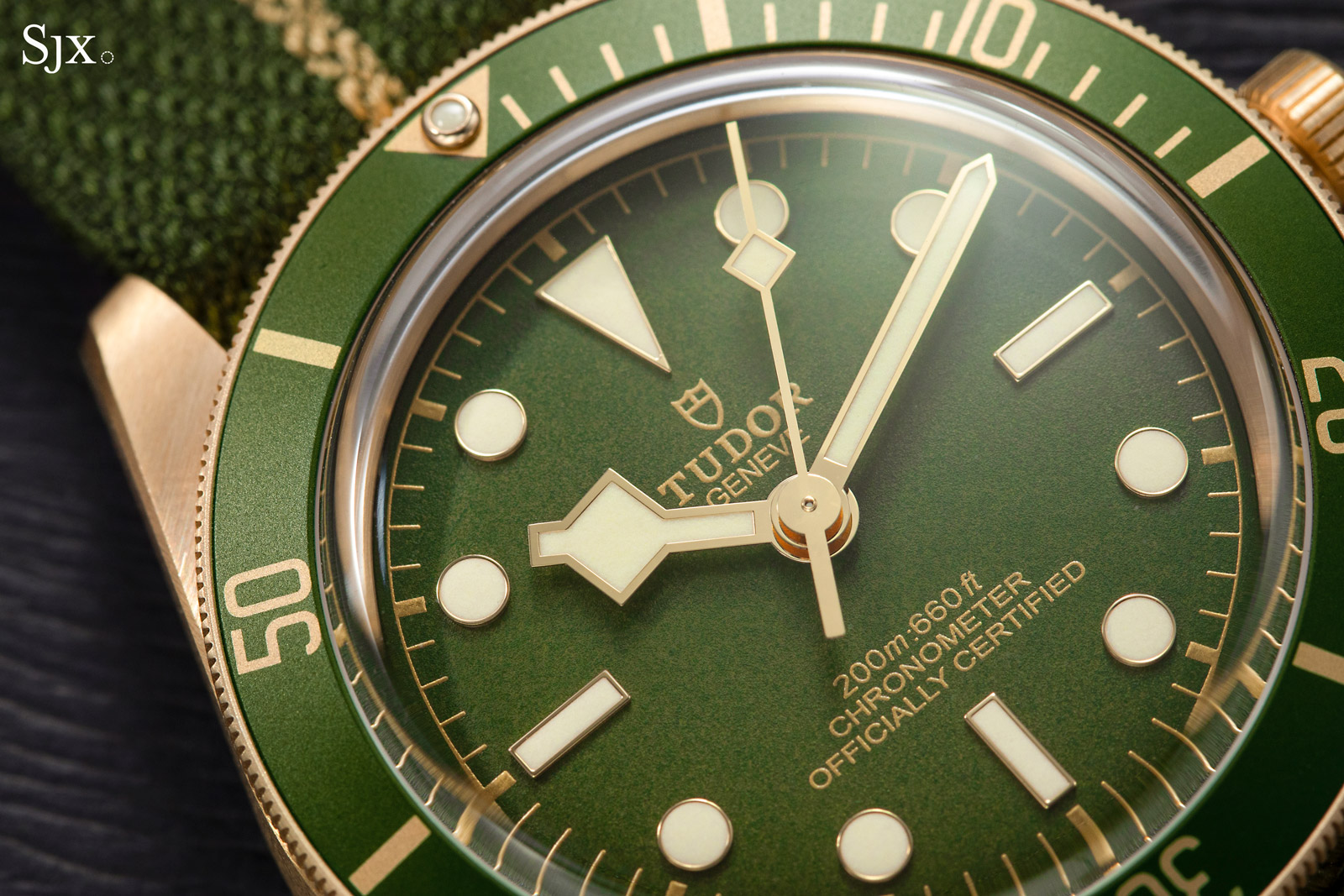
Gold flakes
Green is common for watch dials this year, which makes the colour a bit meh – except for a few instances. The green-and-gold colour works well on the Fifty-Eight 18k.
At a distance the dial appears to be a dark olive, but up close the surface is spotted with gold flecks. It’s finished with finely-grained texture that has a variegated colour that appears almost organic up close, bringing to mind moss.
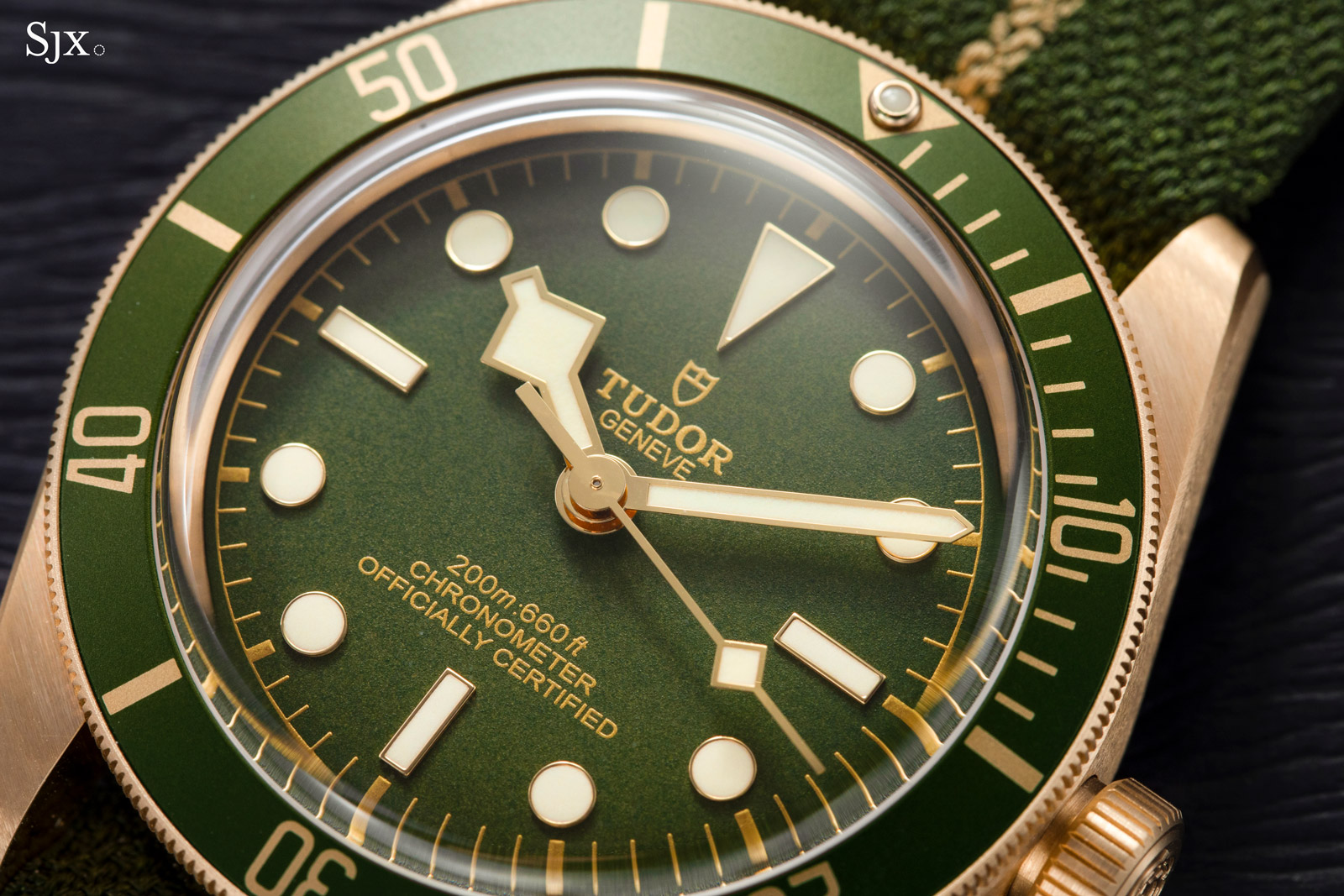
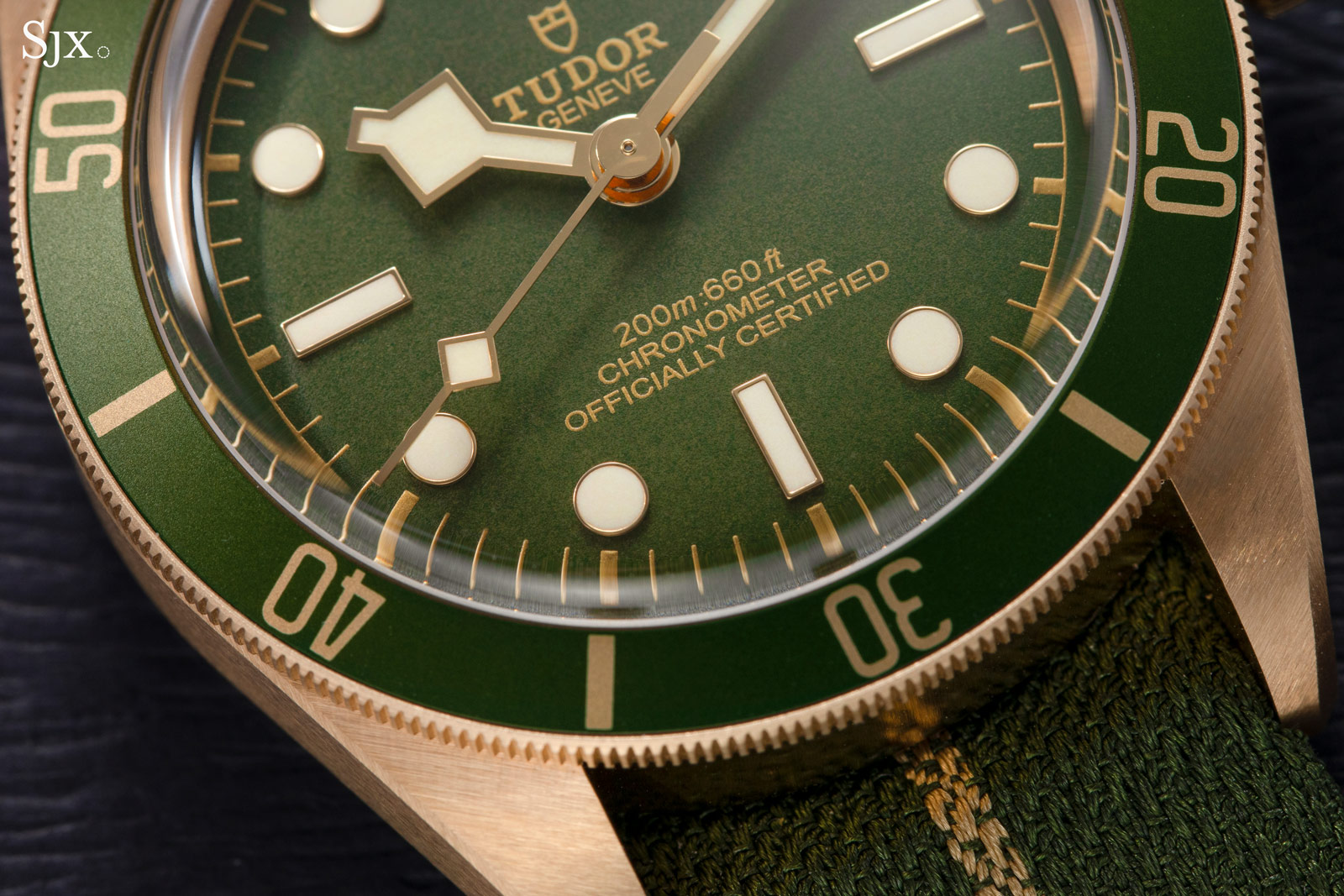
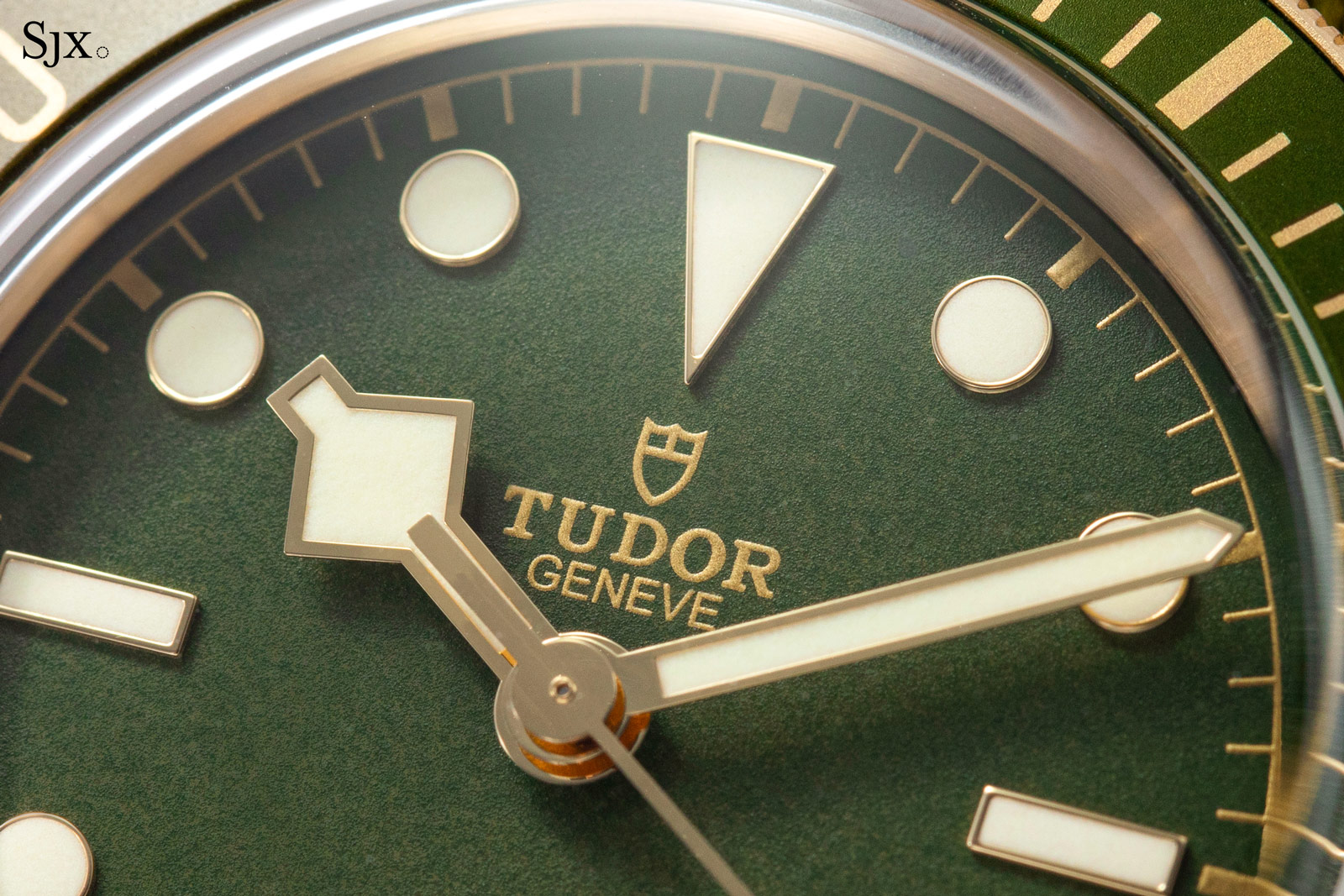
All of the print on the dial is done in powdered gold lacquer, giving the markers and minute track a granular, faintly metallic finish that matches the style of the watch perfectly. That, however, is also found on standard steel models so it is not unique to the Fifty-Eight 18k.
The hour hands and applied indices are unique – they are all made of solid 18k yellow gold. Though solid-gold hands and markers are standard on Rolex watches, they are being applied to a Tudor for a first time with the Fifty-Eight 18k. There’s no observable difference between the solid-gold hands as well as markers and the gold-plated equivalents in the steel models, but the little extra is certainly a good thing to have in a top-of-the-line watch.
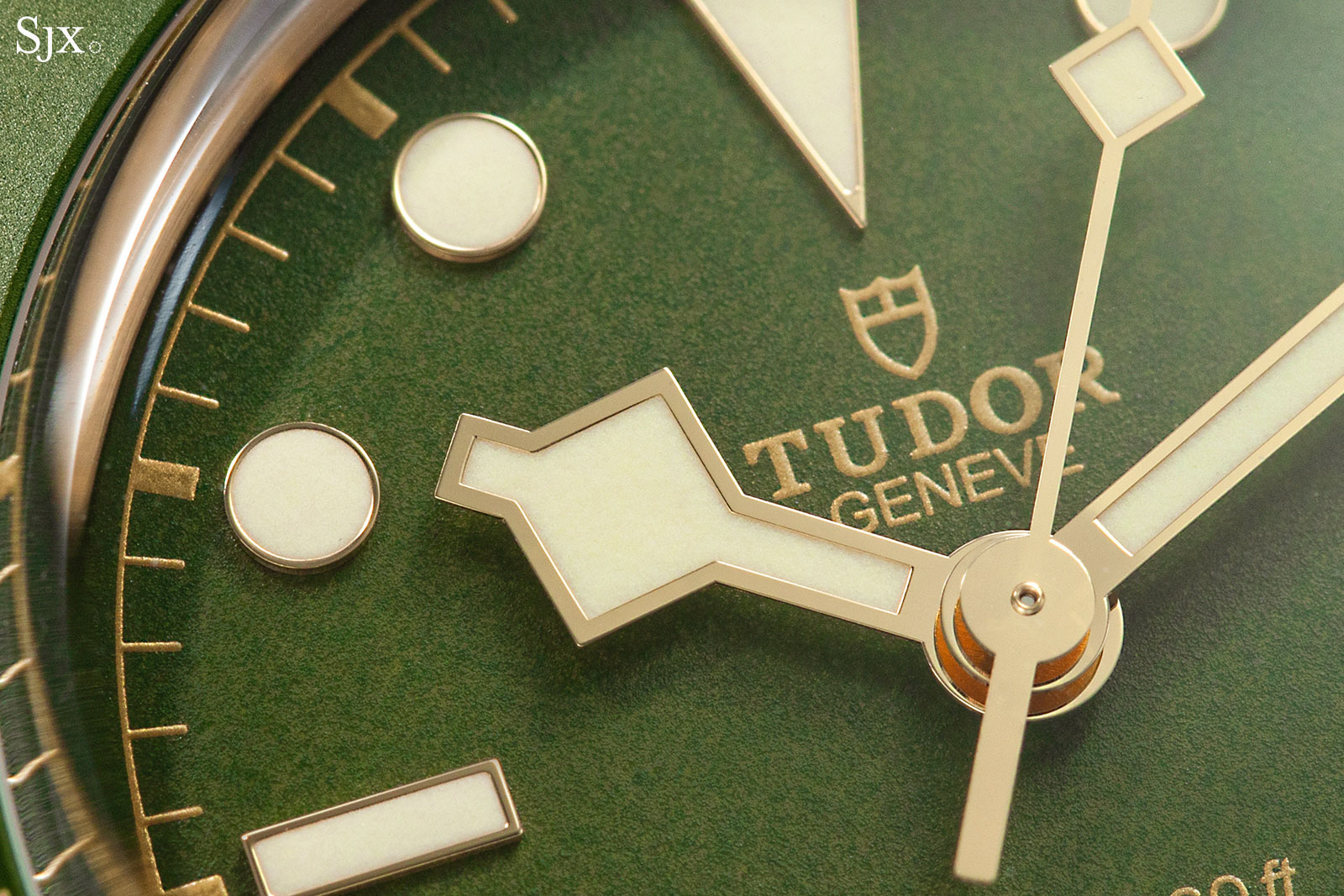
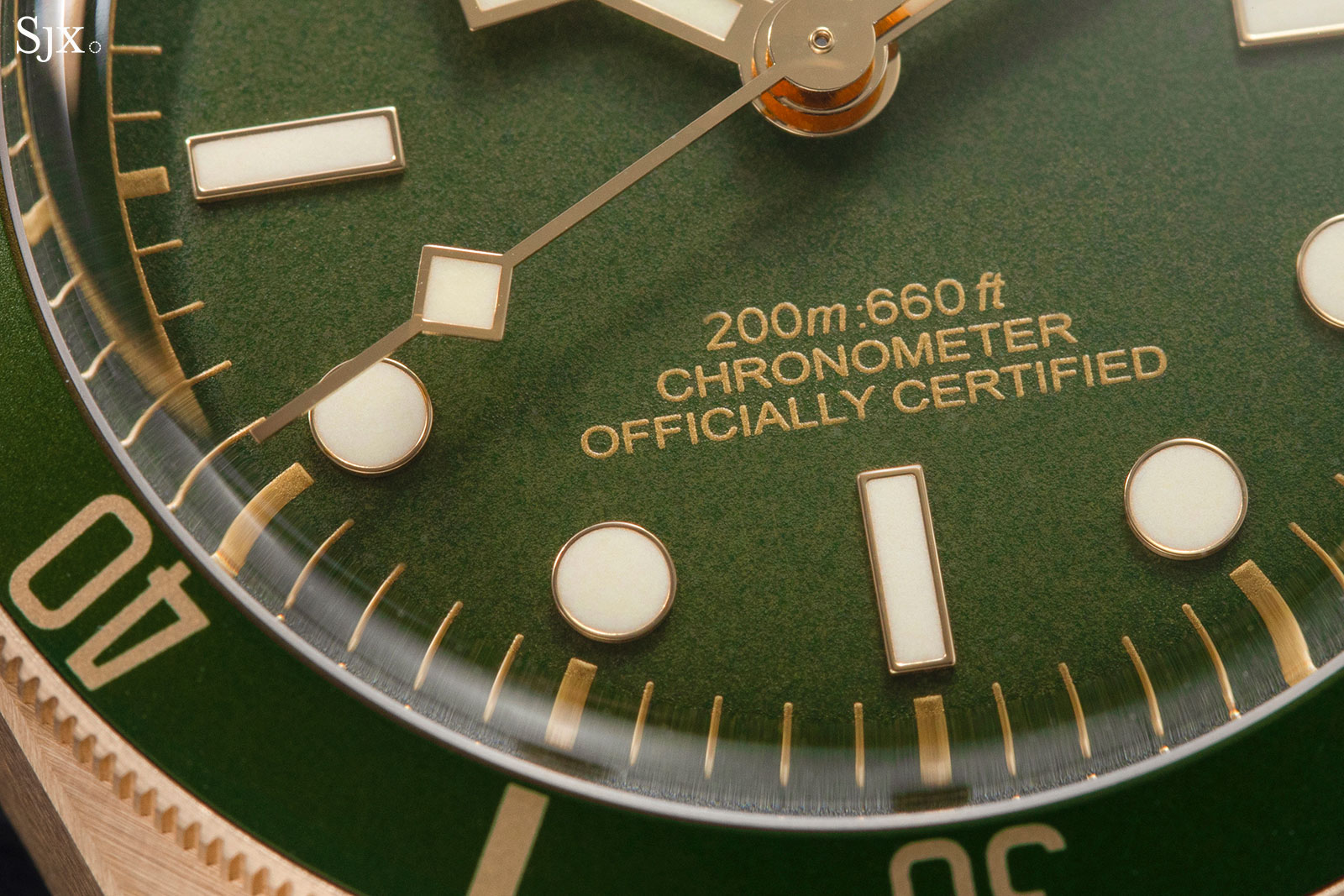
Yellow gold
Having a matte, brushed finish on all surfaces, the gold case is finished identically to that of the Black Bay Bronze. This contrasts with the steel case of the standard Fifty-Eight, which has the traditional polished sides and bevel along the lugs.
The matte finish works well on the Fifty-Eight 18k, especially with the moss-green dial. The choice of case finish is a matter of house style. Tudor only employs brushed gold in its sports watches, including on the two-tone Black Bay Chrono S&G, driven by the desire for a more muted, discreet look, according to the brand.
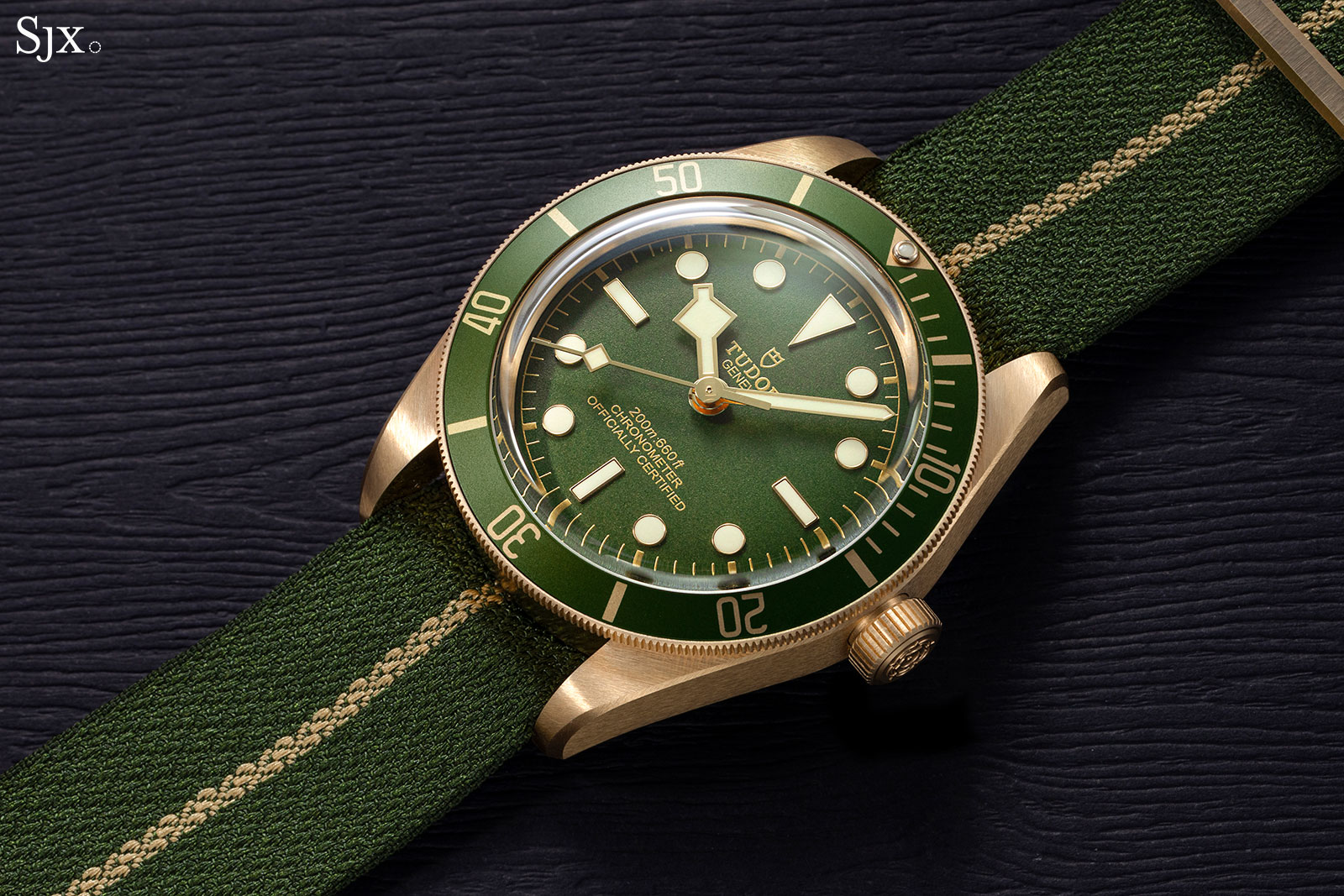
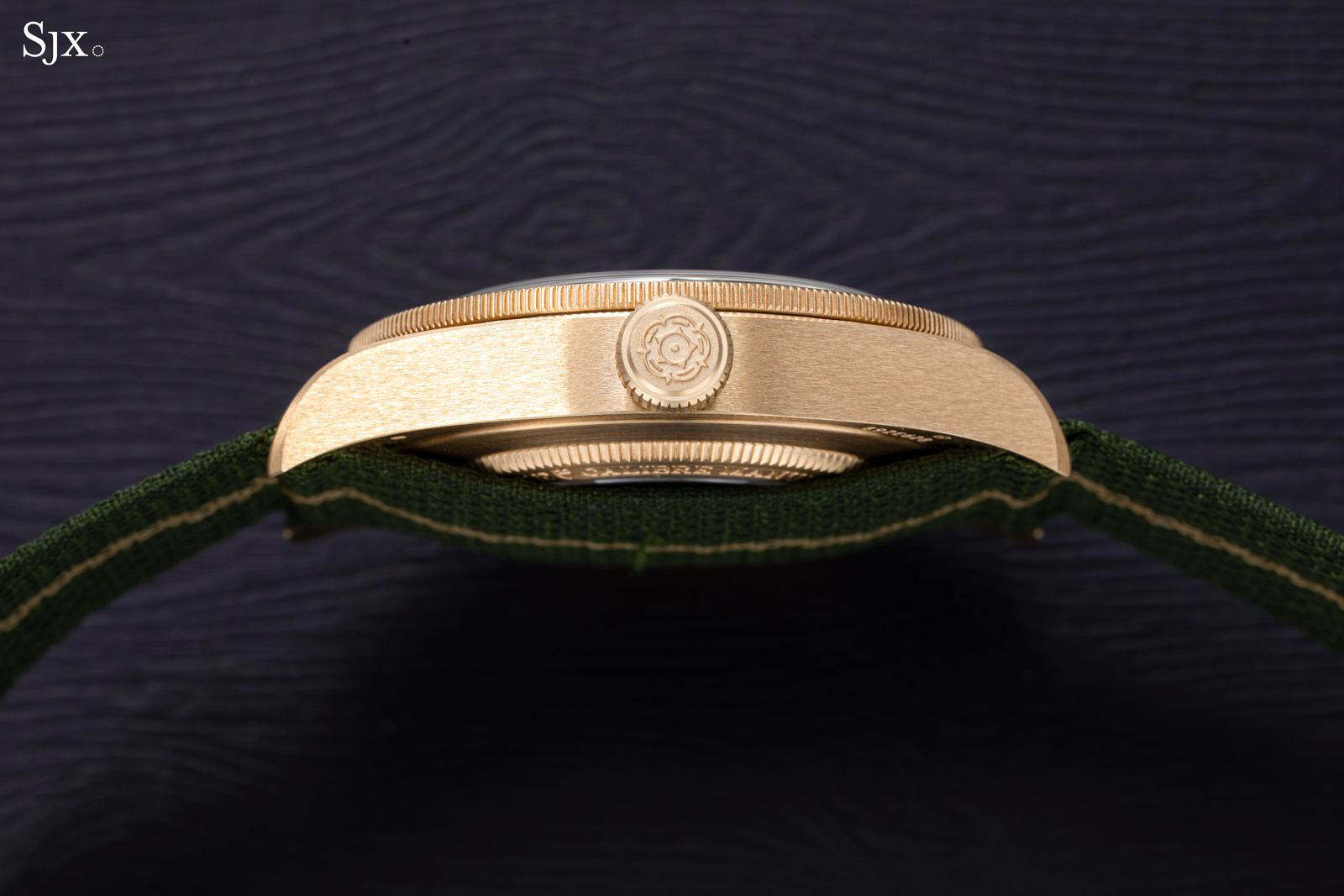
I am impressed by the quality of machining finishing on the case. Everything is sharply defined and carefully shaped.
The wide bevel on the top edge of each lug, for instance, is finished with a brushing that flows perfectly into the grain of the top of the lugs. And the crown is notably precise, with a relief Tudor rose on its top and crop fluting on its sides.

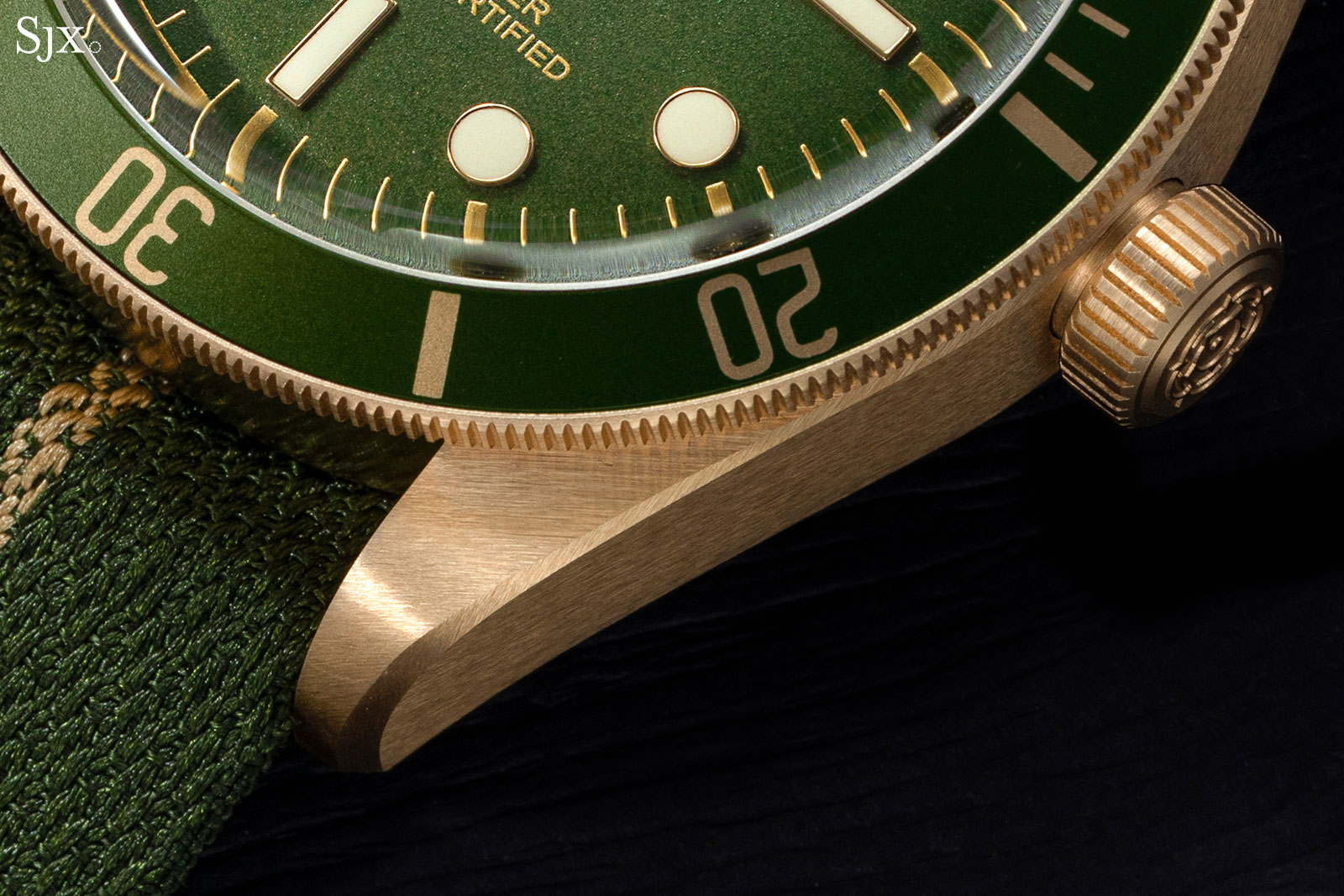
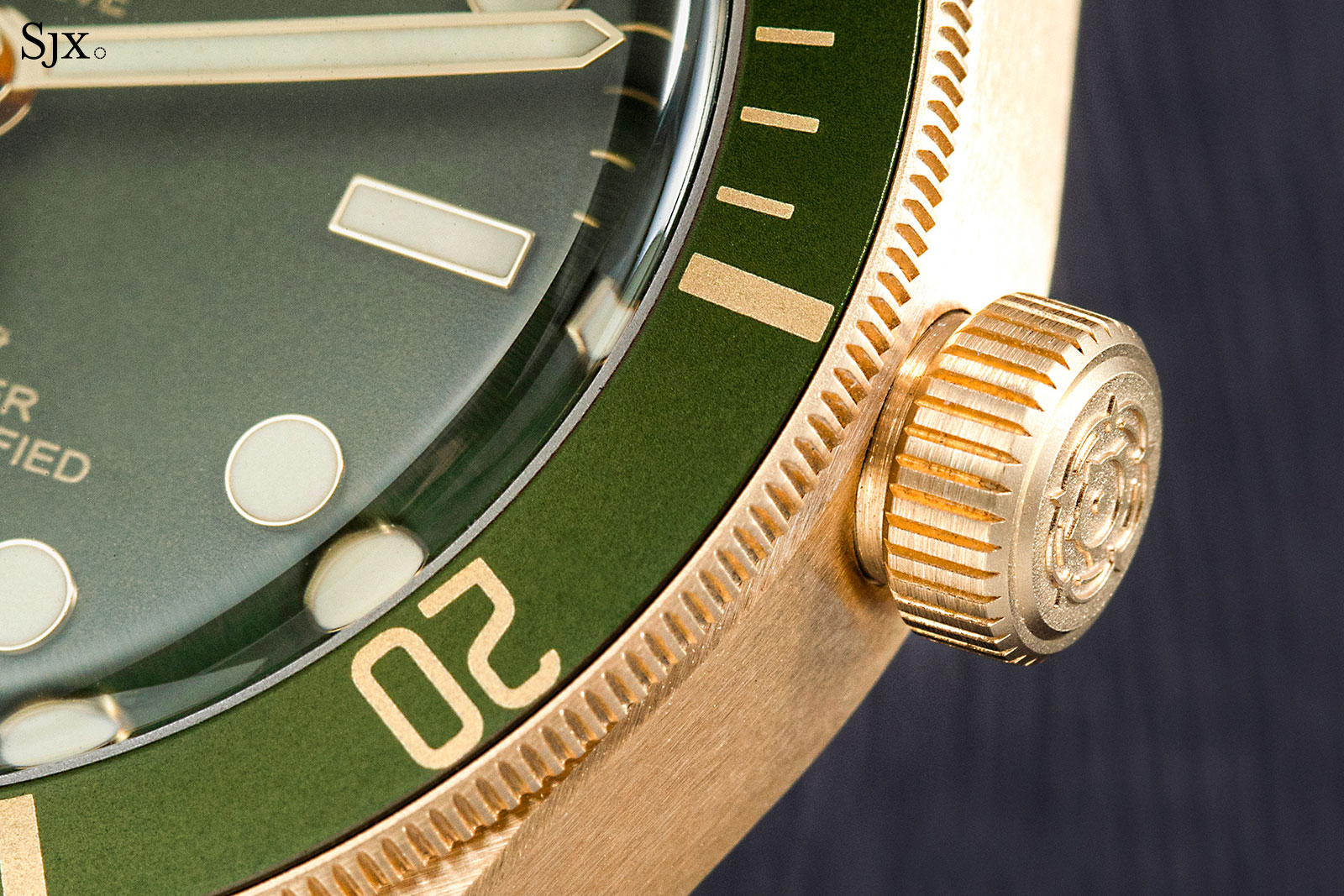
Strategic opening
The precious-metal case means that two features of the Fifty-Eight 18k stand out. One is the display back – the first ever in Tudor’s history – and the other is the new calibre with an enlarged base plate. Both features are also found on the Fifty-Eight 925, the sterling-silver dive watch launched alongside the gold version.
The obvious impetus behind the two is weight reduction. Sterling silver is about 40% denser than steel, while 18k gold is about twice the density. Removing the centre of the case back and hollowing out the interior of the case no doubt help to keep the weights of the the solid-gold (and silver) Fifty-Eight manageable.
Granted, there might be some cost savings as well for the gold model (silver is inexpensive), since the quantity of gold required for each case is trimmed. That said, given my knowledge of Tudor’s philosophy – quality is paramount – and the fact that the Fifty-Eight 18k is delivered with two straps, each with its own 18k gold hardware, I doubt minimising production cost was a goal in itself. My educated guess would be it was pursued in order to keep the price of the watch as affordable as possible.
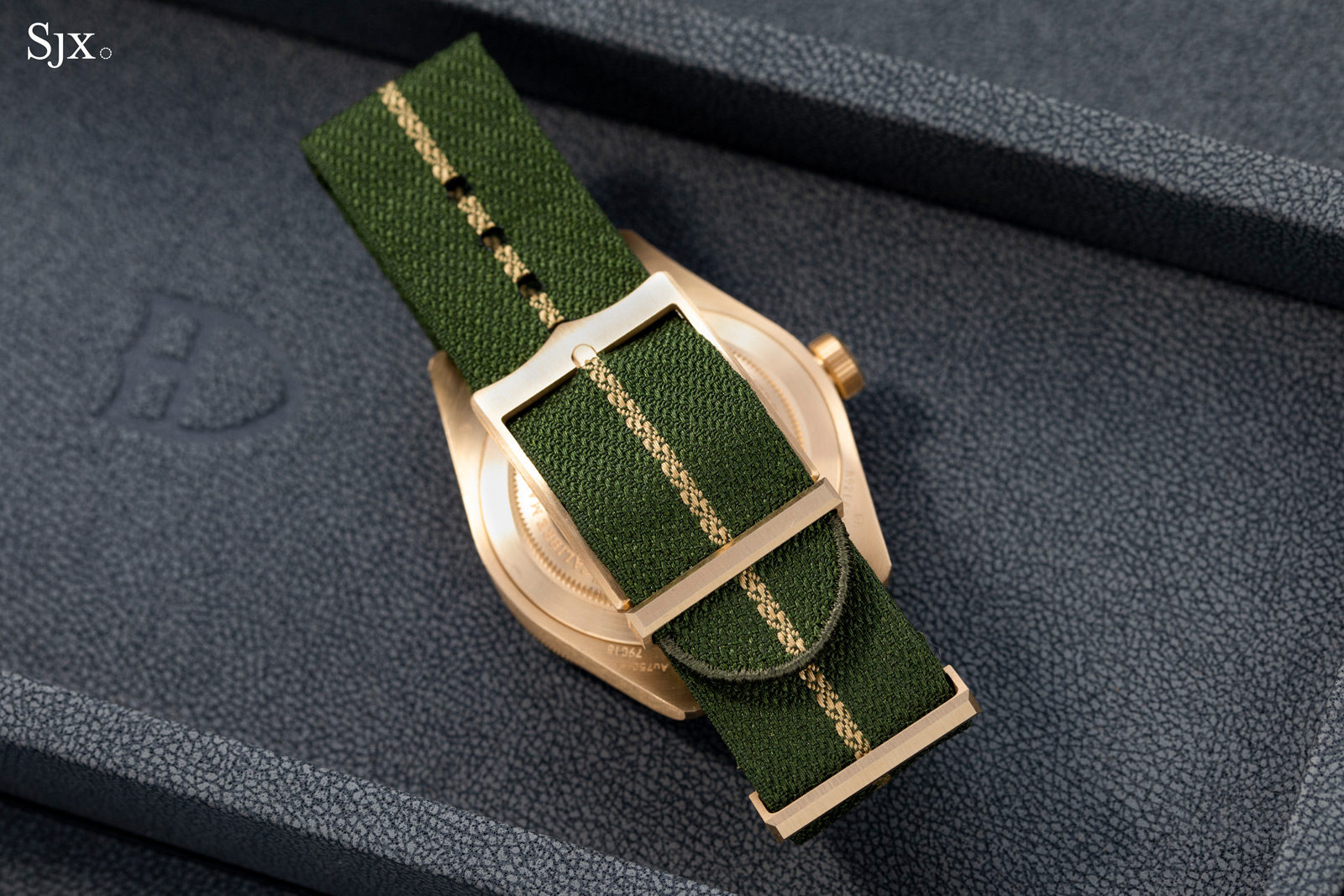
The economics aside, the open back means the movement is visible. [Editor’s note: The movement of the silver version is pictured below, but it is identical to that in the gold model.]
A variant of the MT5402 found in the steel Fifty-Eight, the MT5400 in the Fifty-Eight 18k is essentially identical, save for the larger base plate. It shares all of the qualities of Tudor’s other in-house movements, including a lengthy 70-hour power reserve and non-magnetic silicon hairspring. Put simply, it’s a high-spec movement at a low-spec price.
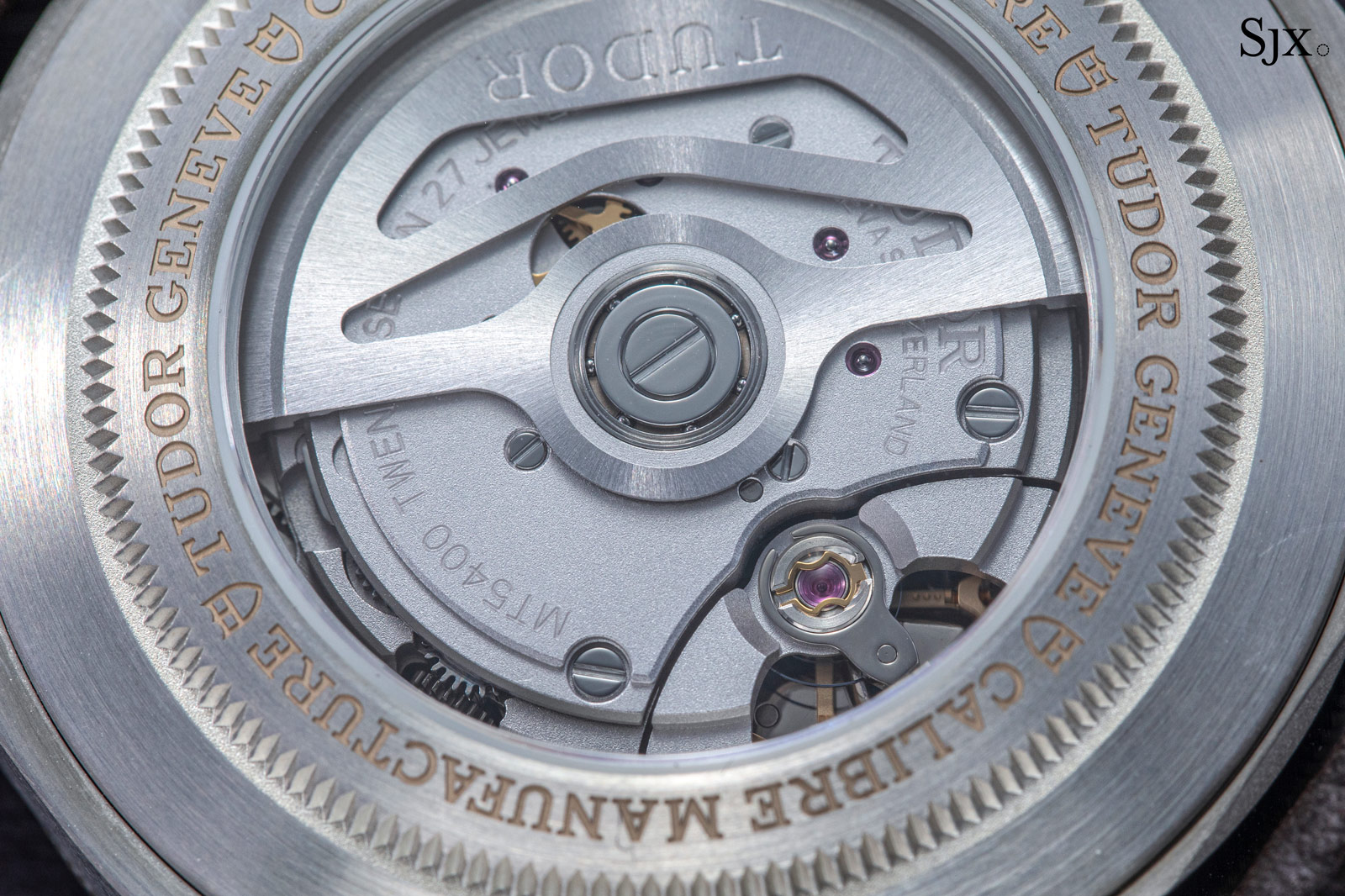
While the technical accomplishments of the movement are undeniable, it isn’t very interesting visually. All the bridges sport a clean, frosted finish, while the rotor is radially grained. Everything is finished neatly, but the look is a bit sterile.
I would have wished for something special on the movement to set the Fifty-Eight 18k (and also the silver version) apart from the steel models. The most obvious is a solid-gold rotor to match the case, or failing that, a gilded rotor.
Concluding thoughts
As solid-gold sports watches go, the Fifty-Eight 18k is certainly the best value proposition out there.
And when Tudor does finally debut a matching gold bracelet – leading to an US$10,000 in the retail price – the Fifty-Eight 18k will still be the best value in its class.
Key facts and price
Tudor Black Bay Fifty-Eight 18K
Ref. 79018V
Diameter: 39 mm
Height: 12.7 mm
Material: 18k yellow gold
Crystal: Sapphire
Water resistance: 200m
Movement: Cal. MT5400
Functions: Hours, minutes, and seconds
Winding: Automatic
Frequency: 28,800 vibrations per hour (4 Hz)
Power reserve: 70 hours
Strap: Both alligator leather and fabric, each with a pin buckle in yellow gold
Availability: Only at Tudor boutiques starting now, available at retailers subsequently
Price: US$16,800; or 23,040 Singapore dollars
For more, visit Tudorwatch.com.
Back to top.

